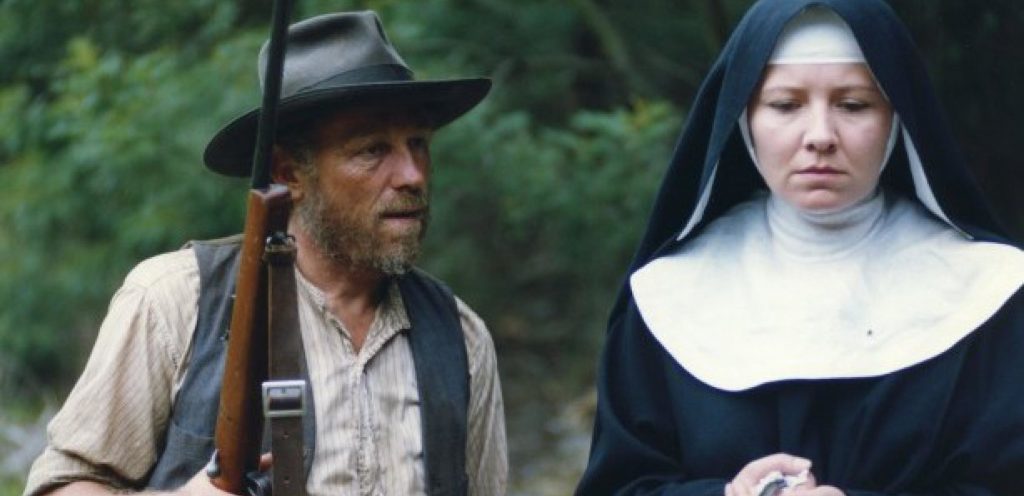
The Nun and the Bandit (Australia, 1992) 93 min color DIR-SCR: Paul Cox, based on the book by E.L. Grant Watson. PROD: Paul Ammitzboll, Paul Cox. MUSIC: Norman Kaye, Tommy Lewis. DOP: Nino Gaetano Martinetti. CAST: Gosia Dobrowolska, Chris Haywood, Victoria Eagger, Charlotte Haywood, Norman Kaye, Tommy Lewis, Scott Stephenson, Robert Menzies, Eva Sitteová, Tony Llewellyn-Jones, John Flaus, Meg Caraher. (Alliance)
There is a very interesting scene where the nun is being driven out to the country, as a tamboura plays on the soundtrack. Her civility begins to vanish as the primitive setting (the bush) becomes more prominent. This is the turning point in the movie where she gives into her captors. It is perhaps the best scene in the movie because it says so much without dialogue, and because so much else of the movie is uninvolving and difficult to stay with. The true story which inspired Paul Cox’s screenplay has tremendous possibilities. It is also another testament of fact being stranger than fiction. A little girl (Charlotte Haywood) is kidnapped by some oafs because her well-to-do father apparently owes them money. But their ransom plot has one slight problem: a nun becomes a willing prisoner for them because she refuses to leave the little girl’s side! Then, the woman of the cloth becomes a special prize for the sadistic gang leader (Chris Haywood). She agrees to be his love slave for a week if they release the little girl. Yet, who is enslaving whom? She becomes prey to his abuse and slovenly demands, and yet he is a captor in his physical attraction to her: she embodies the purity he has always been denied.
On paper, The Nun and the Bandit is probably Paul Cox’s most satisfyingly literate work at the time of its release, if because it’s a rare work in his filmography adapted from a novel inspired by a true story. (His customarily character-driven narratives perhaps deliberately have story threads which are seldom fully realized). However, this film is difficult to stay with because of the poor sound and dialogue, not helped by the austere framing (not least the medium-long shots of the authorities, led by Norman Kaye). Despite the cohesive screenplay and Gosia Dobrowolska’s impressive showcase as the resilient nun (Cox writes female roles very well!), this is sadly less than what it could have been. But what a scene that was!
